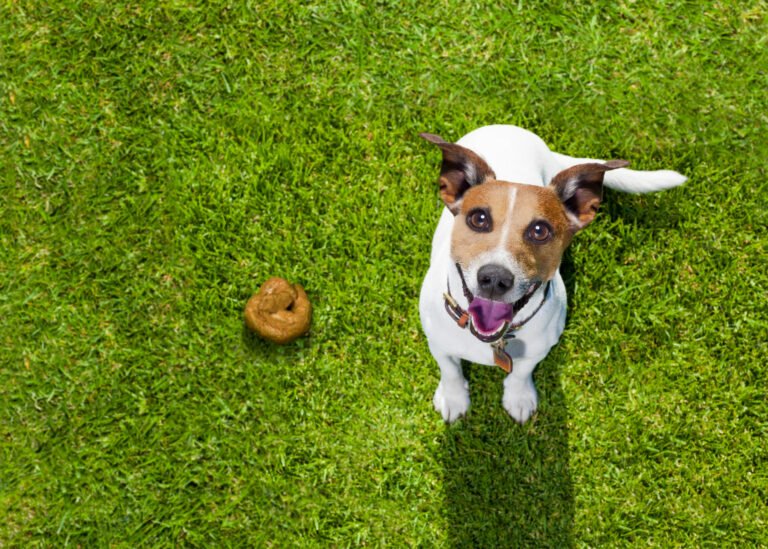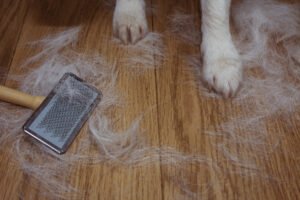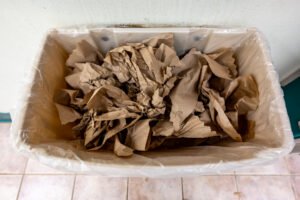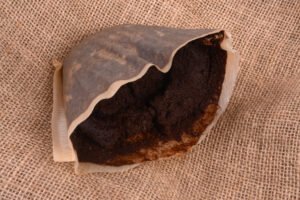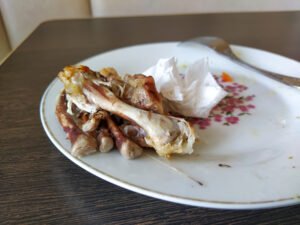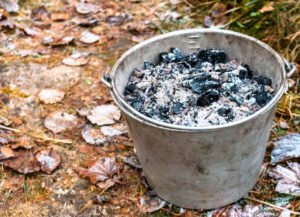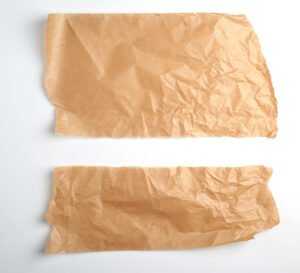Did you know that owning a dog could reduce stress levels? Well yes! But the only issue is dealing with their stinky poop. Today, we’ll show you a creative way to dispose of dog waste without filling landfills. So, let’s find out if you can compost dog poop, and if so, how?
Key Takeaways
- You can surely compost dog poop with some necessary precautions as It makes rich, Nitrogen-rich humus for the soil.
- Dog poop can be composted by Hot Composting, Vermicomposting, and Bokashi Composting methods, which are discussed below!
- It’s best to use dog poop compost only for non-food crops because it may contain harmful bacteria and parasites, causing health issues.
- Composting dog feces can reduce the risk of harmful bacteria spreading from the waste. There are many more benefits and tips for composting dog poop below that you must know. So, continue reading!
How to Compost Dog Poop?
We generally worry about the bad odor and the germs carried by the dog poop. But when it’s composted, the bacterias break down the molecules in the poop and eliminate the odor.
Moreover, being rich in Nitrogen, the poop further enriches the soil. So composting dog waste is the best way to dispose of it.
While considering the risk of pathogens in dog waste, commercial composting is widely popular. But you can also compost dog poop at home through hot composting, the bokashi method, and vermicomposting!
Remember to set up a separate compost bin to compost pet waste, as this compost cannot be used to fertilize food crops.
1. Composting Dog Poop through Compost Bins
Composting dog poop in hot compost bins is the best way to deal with pet waste, as the high temperature helps break down dog waste quickly.
In this method, you need to balance four factors:
- Carbon-rich brown material (yard waste, sawdust, cardboard, paper)
- Nitrogen-rich green material (dog poop, food scraps like peelings, non-greasy kitchen waste)
- Aeration (oxygen)
- Moisture (water)
If you already have a dog poop bin, mix one scoop of sawdust with two scoops of dog waste, add it to the bin, and mix it.
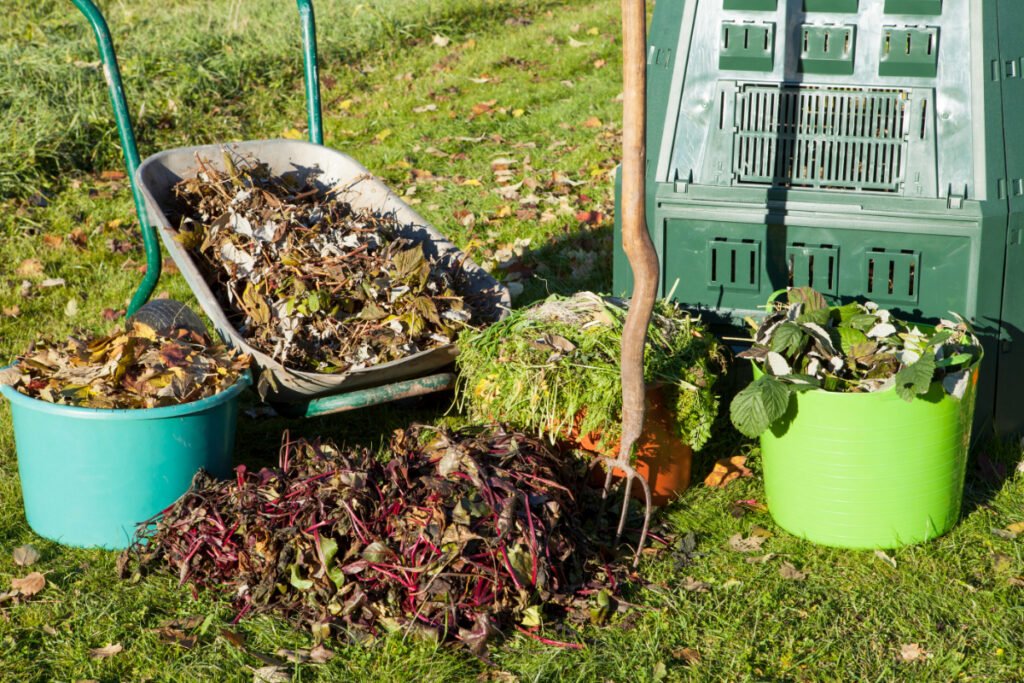
But if you are starting a new bin for composting dog poop, follow the given steps:
Step 1. Set Up the Compost Bin
Get a plastic or wooden bin with a lid. Drill holes across the bin for aeration and place it in a sunny spot in your backyard to let it heat up quickly.
Step 2. Collect the Dog Poop
Collect the dog poop and remove the poop bags. Avoid using plastic poop bags for composting. You must also check for compostable dog poop bags.
Step 3. Mix Brown and Green Materials
Mix dog poop with brown materials like sawdust, shredded newspaper, and dry leaves. Add fresh grass clippings and food scraps like vegetable peelings, fruit waste, eggshells, and other kitchen waste to the brown mix.
Avoid adding greasy food or meat scraps to the compost pile to keep the pests away.
Step 4. Prepare the Bed
Add the mixture of brown and green materials as different layers to the bin and add soil between each layer. This gives structure to the compost.
Once the whole stock is composted, seal the pile with a firm layer of soil and cover it with a lid.
Step 5. Maintain the Compost Pile
Maintain the moisture and oxygen level of the bin. The compost pile should always be damp. If it is dry, add some water or add more greens. You can also use the moisture meter to check the moisture content.
Also, remember to turn the pile regularly to raise and maintain the high temperature in the pile. Your compost must reach a temperature of 73ºC for at least five days to kill the canine bacteria.
Use a thermometer to check the temperature and when you see the temperature drop, mix the compost heap with a pitchfork.
The microbes will break the dog manure and other food waste faster at a high temperature, and the finished compost will be ready within 8-9 weeks.
2. Composting Dog Waste through Worm Bins
Vermicomposting is another efficient method of making nutrient-rich humus from dog waste. But it’s best to use a separate worm bin to compost dog poop.
Worms feed on the dog poop actively when they are supplemented with other food material and break down the waste effectively.

Here are the steps you must follow to compost pet waste through wormery.
Step 1. Set Up Worm Bin
Get a worm bin or DIY one and place it in your backyard.
It is not recommended to keep the worm bin indoors to compost pet waste as it has bad odors and might spread harmful pathogens.
Step 2. Prepare the Bedding
Add a thick layer of shredded newspaper to the bottom of your compost bin and dampen it.
Then add a firm layer of soil over the shredded paper to provide grit to the worms and sprinkle more water.
Step 3. Add Dog Feces to the Wormery
Now add the pet waste. Remove any compostable (or plastic) and biodegradable poop bags, as the worms will not eat them and slow down the decomposition.
Then add other kitchen and food waste, cover the bin with gunny bags, and leave it for a week to let the material decompose naturally.
Step 4. Add Worms
Add a handful of red wiggler worms to the bin. Worms will begin to feed on pet excrement and other items. When the meal is digested, the worms excrete the waste, which creates vermicompost or vermicast, a nutrient-rich fertilizer.
Step 5. Maintain your Worm Bin
Remember to feed the worms once a week and to rinse the wormery when it’s dry. Vermicompost will be ready in 6-9 months. Dry this compost for a week before adding it to your flower gardens.
3. Composting Dog Poop through Bokashi Bins
The Bokashi method is an indoor anaerobic composting method that is suitable for urban dwellers. This method supports composting pet waste, meat scraps, and even fish and chicken bones, besides regular waste.
The bokashi method only gives the pre-compost or fermented food which needs to be composted further.

Follow this step-by-step process to compost dog’s poop through the bokashi method:
Step 1. Set Up Bokashi Bin
Get a bokashi bin and place it near your balcony or in the garden. Add a small amount of bokashi bran that acts as a composting catalyst for food fermentation.
Step 2. Add Dog Waste to the Bokashi Bin
Add the pet waste to the bin. You can add 4-8 scoops depending on the size of your bin. And ensure not to add the poop bag to the bin.
Step 3. Add the Bokashi Bran
Add the bokashi bran to the bucket and press the waste firmly with a shovel to remove the air pockets and close the bin’s lid.
Let the waste ferment for up to 10 days. Do not disturb the process by removing the lid frequently. You can add the remaining waste to the next batch.
Step 4. Collect the Pre-Compost and Compost in a Bin
After ten days, the pre-compost will be ready.
Bury this fermented waste in your regular compost bin and leave it for the next 2-4 weeks to break down further.
Although the pathogens in pet poop are killed during fermentation, this process makes the compost acidic. So it needs to be added to the regular compost bin.
The hummus will then be ready to use in your garden for shrubs and flower beds.
Why Do You Need to Compost Dog Waste?
According to Environmental Protection Agency, an average dog creates ⅓ of a pound of waste per day or about 275 pounds per year. This indicates vast amounts of waste going to landfills.
Composting dog waste is a low-cost way to dispose of waste. It protects the environment by reducing waste in landfills and reducing methane emissions.
Moreover, the dog waste also comprises NPK of 2-10-0.3. The Nitrogen in dog waste is equivalent to an 18 lb bag of urea and other nutrients. Thus it makes an excellent soil additive when composted.
Why Should You Not Use Fresh Dog Poop as a Fertilizer?
Dog poop is acidic and harmful to plants. And since fresh poop is slow to decompose in natural conditions, it may end up intact near your plants for several months to a year or more.
Also, the stool contains harmful parasites like hookworms, roundworms, E. Coli, etc., and may infect plants if left in your garden or used for your plants without composting. These bacteria can also infect humans.
So, it’s always good to compost dog poop to use in your garden instead of burying it in soil.
Benefits of Composting Dog Poop
According to the EPA, dog waste is a safe soil supplement when composted for lawns, flowers, shrubs, and trees (except for food crops).
In addition to that, there are many other benefits of composting dog feces.
- By composting dog poop, you can reduce the total waste volume by 50%, saving huge amounts of waste going to landfills.
- Dog waste is rich in Nitrogen and Potassium and adds nutrients to the compost.
- It acts as a soil additive by improving the physical property and fertility of the soil.
- Composting dog poop eliminates the risk of spreading harmful pathogens from dog waste.
- It also helps reduce the chances of groundwater and surface water pollution.
- Composting dog poop is a cheap source of organic fertilizer.
Additional Tips For Composting Dog Poop
When you don’t dispose of dog waste, it creates unsanitary environmental conditions. So composting is a better way to handle dog poop.
But dog poop may lead to multiple concerns if not composted with caution. So follow the given to compost pet waste effectively.
- Do not compost the waste from unknown dogs or those who show signs of diseases.
- Avoid adding pet waste compost to vegetable gardens or any edible plants and trees, as the pathogens might enter the food chain and make you sick.
- For composting dog waste, use separate compost bins. Do not mix it with the regular compost you would use for your food crops.
- Use gloves while handling dog waste.
- Use a lid while composting to eliminate the odor and maintain heat in the compost pile.
- Turn the compost pile once in a while to maintain a high temperature for better decomposition.
- Do not toss the dog waste with plastic or decomposable bags in the compost bin.
How long does it take dog poop to decompose?
It can take up to 2 months (9 weeks) for the dog poop to decompose completely. The decomposition time depends on the dog’s diet and climatic conditions. For example, if the dog feeds on plant-based materials, poop will decompose faster. Also, dog waste breaks down faster in hotter climates.
Can you home compost dog poop?
Yes, it’s possible to compost dog poo with other organic materials in a home composting setup. It can be composted through the hot composting method, vermicomposting, or the bokashi compost method.
Can I bury dog poop in my garden?
It is not recommended to bury dog excrement in the soil since it may cause soil pollution. If dog poop is buried directly in the garden, it may cause Nitrogen toxicity to the plants. Moreover, with rain, dog feces may leak into water bodies, polluting groundwater and surface water.
Is dog poop biodegradable?
Yes, dog poop is biodegradable, but it is not recommended to leave the waste on the ground or in parks. When pet feces breaks down, it releases harmful pathogens like e Coli and salmonella, which may pollute water bodies and soil.
Is dog waste green or brown compost?
Dog poop is rich in nitrogen and is considered the green composting material. So, mix it with brown composting materials like sawdust to get a fine dog poop compost.
Can you add poop bags to the compost?
You should not add plastic poop bags or biodegradable poo bags to the compost. Though compostable dog poop bags are available these days, they take up to a year or longer to break down. So it is not recommended to add poop bags to the compost bin.
Dog poop contains harmful bacteria and thus needs to be disposed of carefully. But it also contains high amounts of nitrogen and other organic matter, making it a great soil additive if composted.
The above-mentioned methods will help you compost dog poop effectively. But remember that you must use the poop compost only for revegetation, landscaping, and non-food crops.
Dryer lint is another excellent material that can be used in gardens. But can you compost dryer lint effectively at home? Join us to know more.
Happy Composting!
